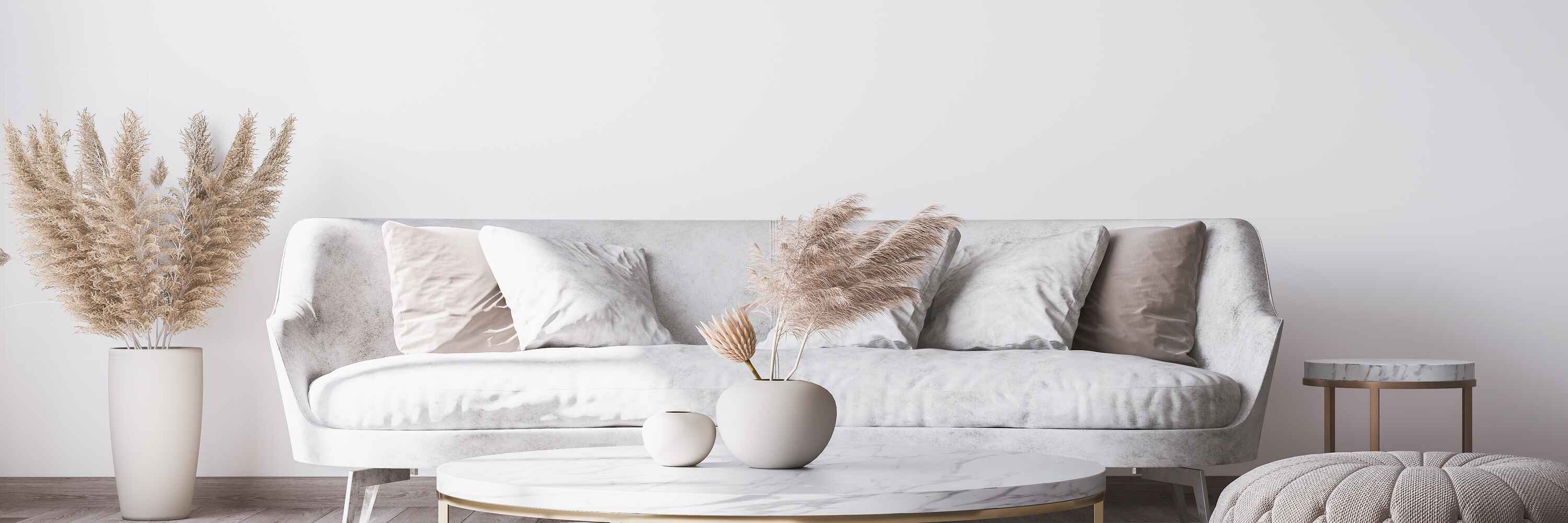February 28th, 2021
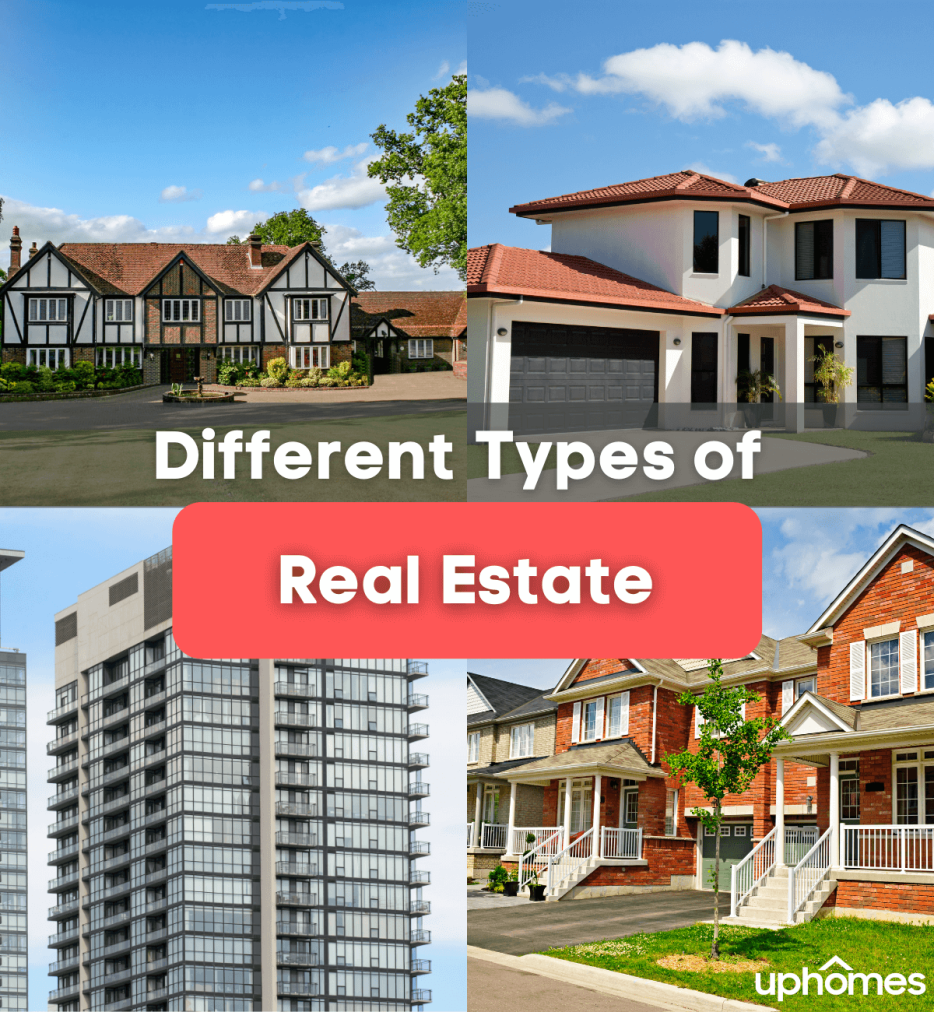
23 Different Property Types: Real Estate Guide
Looking to understand the different property types when it comes to real estate? We have you covered with 23 different types of properties below!
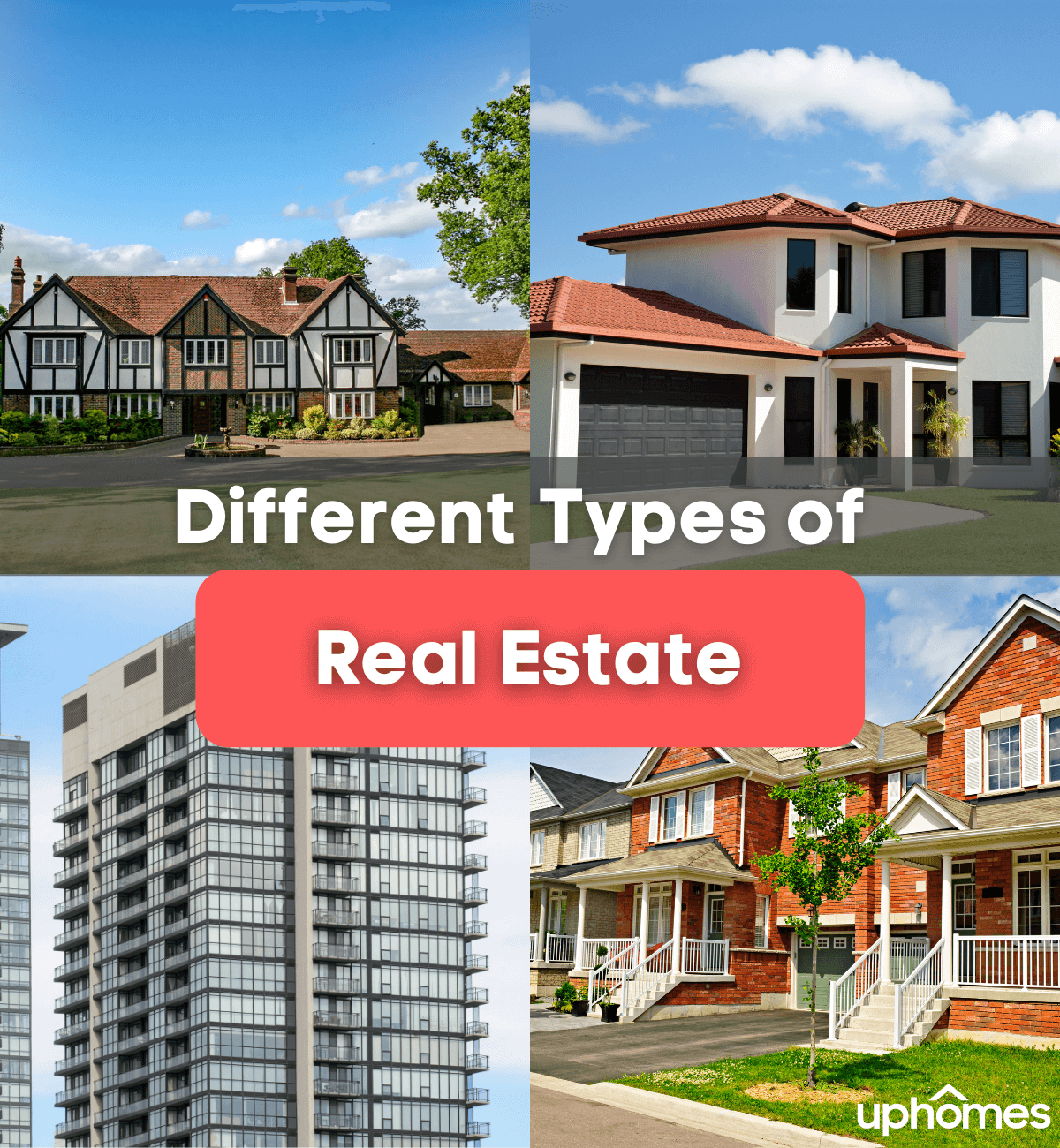
When you're looking for the perfect home, explore different property types before committing to one. After all, if you're planning to grow your family, you probably don't want to look at tiny homes. And if you have bad knees, the staircases in a split level won't be a good match.
Think about your lifestyle, goals, and family before you make a big purchase. And read on to find the complete guide to different property types!
1. Single-Family Home
If you're looking for a complete home with the living space, kitchen, and bedroomtotal that you need, a single-family home is a reliable choice. Single-family homes don't share walls with neighbors, and theydocome with land.
Single-family homes also come with a lot of responsibilities, however. You may have expensive repairs, like replacing a roof or HVAC system. You’ll have to maintain the home and the property as well or hire someone to do the job.
Buyingnew construction single-family homeswill offset some of these maintenance costs. You may need to pay a higher price for a new space though in some markets new construction can be even more reasonably priced! In a new development of single-family homes, you maylose out on mature trees and landscaping,with the benefits of community amenities.
When you invest in a single-family home, you have an opportunity to profit off your investment. Choosing a home in a popular neighborhood and doing some modest upgrades could increase the value. When you sell, you can put the profit toward a bigger or better space.
Another advantage of a single-family home is that you can make it what you want it to be. You can repaint the exterior, upgrade the kitchen, or finish the basement at any time.
And you'll never have a shortage of options. You can count on havingsingle-family homesas an option in rural, suburban, or even urban landscapes.
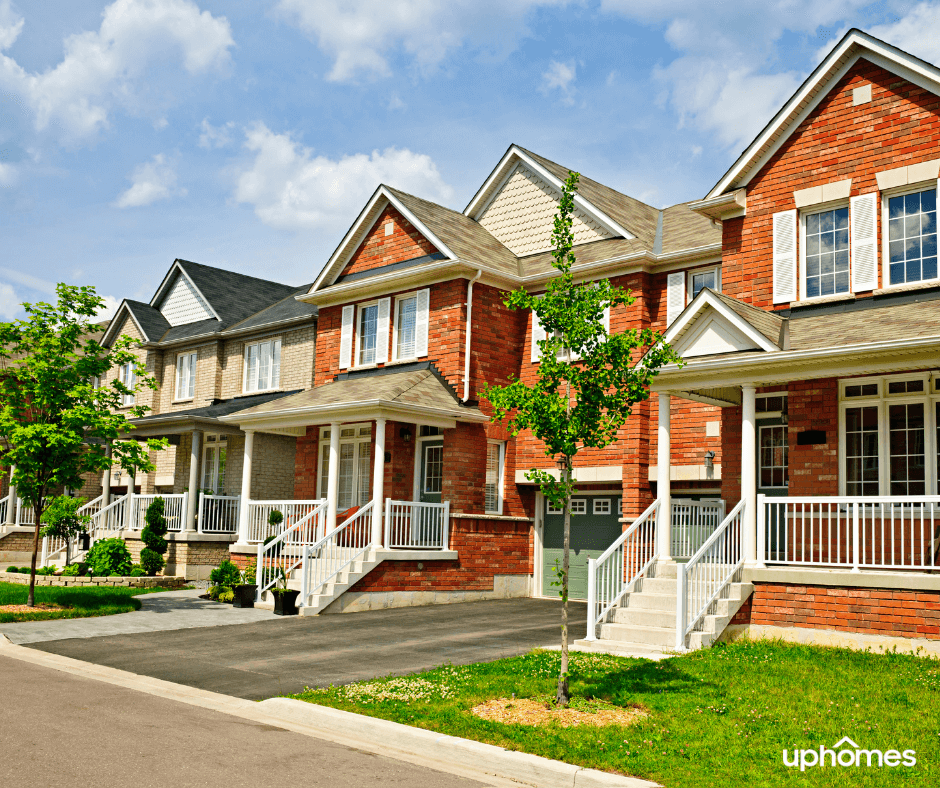
2. Townhome
With a townhome, youget a low-maintenance living space. You can own a townhome as you would a detached house. The difference is that you will share walls with other residents in a townhome — but no one will be living above or below you.
Townhomes tend to have multiple floors and street access. They're a good way to get the feeling of a single-family home inan urban area. In some instances, they look like rowhouses.
The vertical orientation of these homes means you'll be climbing a lot of steps. If you have knee or back issues you may want to be looking towards a ranch. Or if you dread the thought of hauling groceries up several levels!
You may need to payHOA feesto cover some amenities that you share with other residents of your building. Some townhomes come with yard space, too. In those instances, you may be responsible for keeping up the exterior or yard associated with your unit.
3. Bungalow
Don't want a huge house to maintain? Go with a bungalow. Bungalows are single-story dwellings with modest porches out front.
These houses became popular in the early 20th century. They remain aninexpensive choice today compared to other single-family homes. Because the footprint of a bungalow may be under 1000 square feet, you can think of them as detached apartments.
One of the big benefits of a bungalow is that you won't need to share walls with a neighbor. If you're looking for a step up from an apartment without a step up in scale, bungalows check that box.
With bungalows, you will have neighbors and a lawn since these homes tend to be in neighborhoods. Bungalows are a great choice for couplesjust startingtheir lives together. They're also great for anyone who wants a small home.
4. Ranch
Ranches are single-story homes, too. The difference between a ranch and a bungalow, however, is that a ranch has more space.
Ranches became the default home choicein the 1950s. They played into the American dream of owning a sprawling home with a bigger yard. Go to any suburb, and you're bound to find lots of ranch-style homes!
If you're moving into a ranch from that era, be aware that it may need some modernizing. Depending on the previous owner's efforts, you may be dealing with dated kitchens and shag carpet.
On the plus side,a lot of ranches feature big bay windows and luscious landscaping. You'll also be able to get away from your housemates because of their sprawling floorplan.
Look into a ranch if you have any mobility issues. Ranches are a smart move as retirement homes because they don't require climbing any stairs. And even without a second floor, their rectangular design makes them seem roomy.
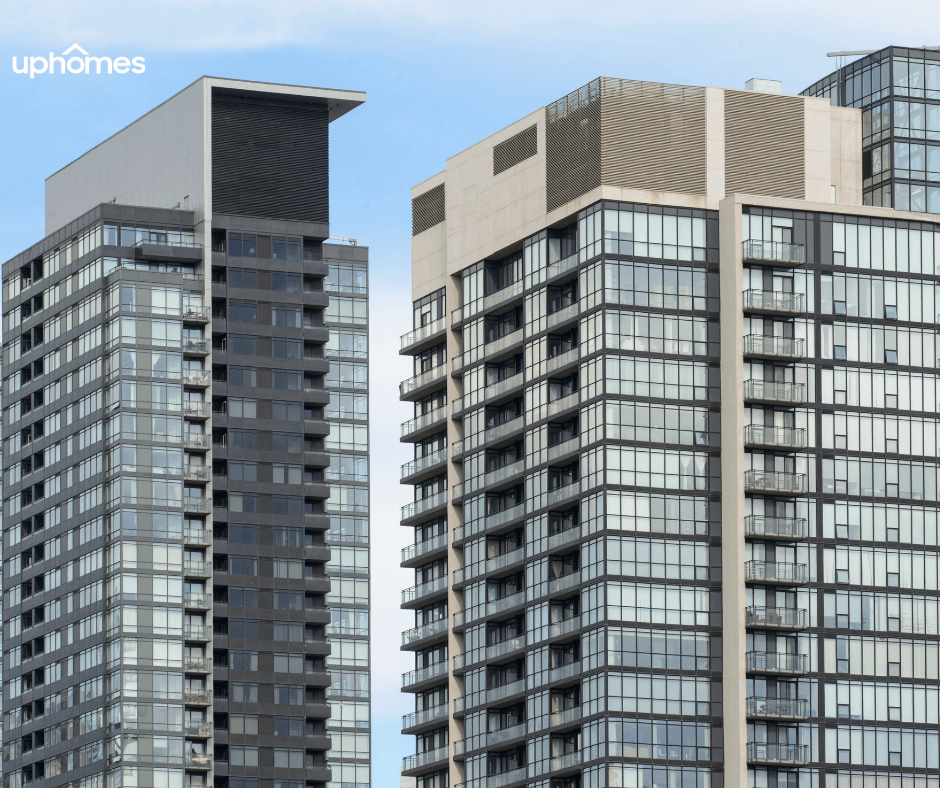
5. Condos
Looking for easy living? Try a condo! If you live in a city or don't want a detached home, a condo offers a solution.
The inside of a condo can be tiny like a studio apartment. Or it can be big and spacious. For avacation property, condos work well since they don't require maintenance and often come with sweeping views.
With a condo, you own your space — unlike an apartment. That means you'll need to seek out the handyman when it's time for repairs. Also, you may share walls with other people on all sides of your unit.
As a big benefit, you won't need to haul out the lawnmower on Saturdays. Because of this, condos are ideal for retirees or even single people who don't want yard work to consume their weekends. And you may be able to rent them out to vacationers if you live in a scenic area.
6. Victorian
Victorian homes are show stoppers when it comes to house styles. Thesehouse styles are two or three stories high and skinny. But it's the ornamentation that makes them stand out.
Victorian homes look a little bit like dollhouses. In their heyday in the 1800s, Victorians were a sign of the owner's wealth.Painted inbold colors,Victorians could bringan impressive presence to the neighborhood.
The nameVictoriancovers a few different house styles. The Gothic Revival and Queen Anne style are two of the more popular ones. Artist Grant Wood's iconic painting,American Gothic, shows off that Gothic Revival style.
Victoriansare known for lotsof slender windows and a broad front porch. Some even have turrets or towers for extra drama.
The exterior of the house may have lots of different angles and steep pitches to the roof. When you walk inside, a dramatic staircase willgreet you. You'll also findintricate woodworking and molding throughout the interior.
7. Colonial
When it comes to an iconic American home, the Colonial is it! This house style originated in America in the 1600s — during the colonial period. The Colonial-style home shows strong connections to its British counterpart,the English Colonial.
With the Colonial, youget a boxy home. A front door sits in the middle with windows balancing things out on either side. Bedrooms will be on the second floor— and there'salwaysthe second floor in a Colonial.
Sometimes Colonials can come across as formal. But if you love to entertain, the layout is perfect for moving around the house.
Inside the house, you'll find a central staircase with a kitchen, dining room, and living room around it. The balanced layout makes Colonials a good choice for a family.
One of the benefits of this style is its symmetry. If you want to add on another room or extend the kitchen, it's easy to do so. The home's rectangular shape means you won't have to get creative with room shapes.
8. Container Home
Did you ever think that it would be possible to live inside a steel shipping container? Thanks to great design skills and innovation, container homes have become excellent dwellings.
Container homes are an eco-friendly choice. Why? These types of homes recycle old shipping containers from shipyards.
And because these homes are made of rectangular containers, they are highly adaptable. You even can mix them with traditional building materials, like brick, for a homier look.
Builders can stack shipping containers to create height. Or they can link them together to create bigger, open spaces.
It's easy to cut windows or doorways into the steel walls. At the same time, it's easy to create seamless transitions from one container to the next.
You'll get an industrial aesthetic that sets your home apart from its cookie-cutter surroundings. As a bonus, these homes go up more quickly since the walls and roofs are already in place. Add on a deck or swimming pool and you'll have a retreat that costs much less than a traditional home.
9. Split Level
One of the most popular types of homes is the split level. Its popularity surged in the 1950s and crested a decade later. Travel to any American suburb and you are bound to find streets lined with them.
Why is this style popular? The split level gives you ample square footage even if you're working with a small lot. They also can work on lots with steep inclines or uneven terrain.
The downside is that you'll have to climb lots of steps in one of these houses. But the positive outcome of this effort is that each room has a little more privacy. Each room will be on its own floor.
You'll be able to work in solitude or tune into your favorite show in a sunkenliving room. And since most split levels come with a walkout basement, you can head to the backyard for some time outdoors easily.
Some split levels may be dated inside because of their age. But with some updates, these homes can rival more contemporary builds.
10. Houseboat
If living on the land has you bored, why not live on the water? When you own a houseboat, you'll get an affordable home with unbeatable views.
You'll also gain the freedom to travel anywhere you want with your living quarters in tow. Houseboats are designed to be able to travel. Start the engine and change your view before dinner time, if you'd like!
Much like purchasing a traditional home, you'll need to make a down payment on a houseboat. Also, you'll want to assess your space needs since you'll lose square footage on most houseboats. You may need a storage unit for any furniture that doesn't make it on the boat.
From a maintenance standpoint, you won't have a lawn to mow. But you will need to check your boat and deal with pumping sewage each month. And you'll need to pay for a diver to help maintain the hull of your boat.
It's wise to get a houseboat inspected before you call it home. If you live in a remote water location, a houseboat can be a cheapchoice.
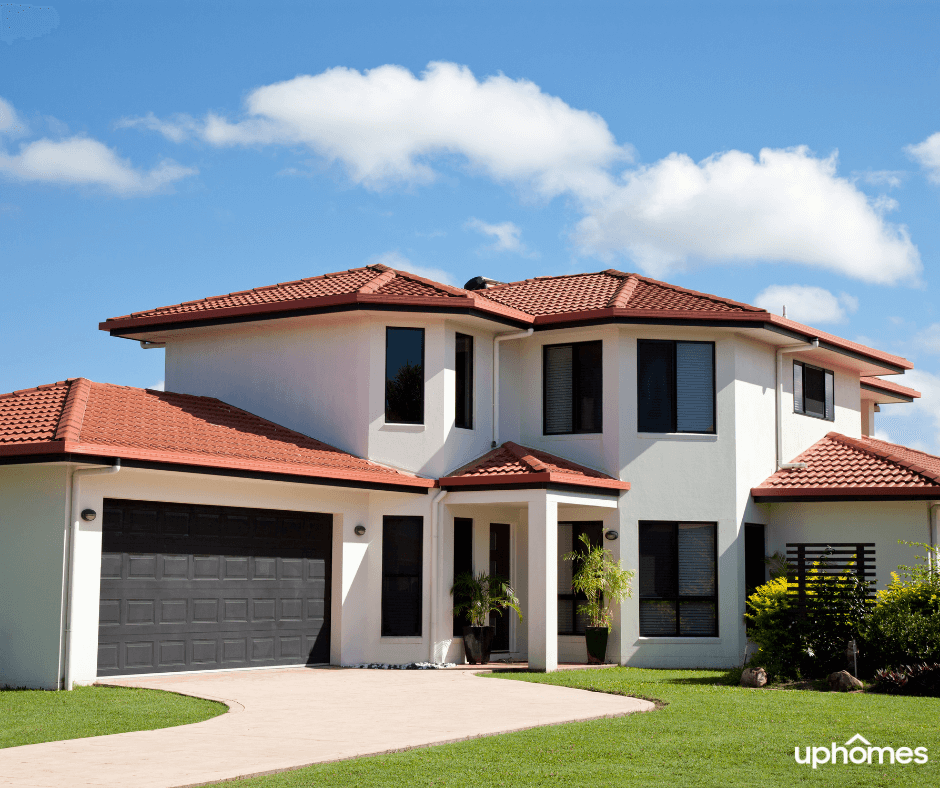
11. Mediterranean
In a warmer climate, Mediterranean homes are common. When you see red tile roofs popping up on the horizon, you're looking at Mediterranean homes. White stucco walls and arched windows complete the exteriors of these homes.
These unique homes reflect the architecture of places like Greece and Spain. While plenty ofMediterranean-style homes exist in northern climates, you'll see more insouthern states. They grew in popularity in the 1920s in coastal towns and resorts.
Since these homes suit warmer climates, you'll find balconies and other outdoor areas. Add some palm trees outside for a complete look. With the right landscaping, living in one of these homes will make you feel like you're on vacation.
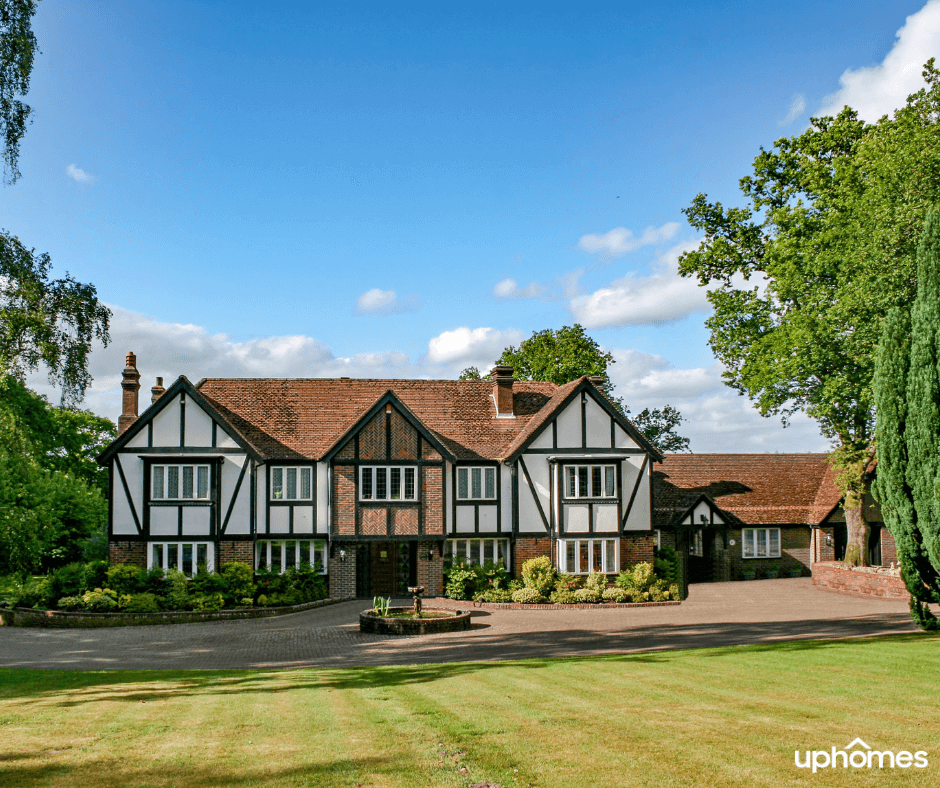
12. Tudor
For a distinctive look, live in a Tudor-style home. Tudor-style homes took off in the 1920s. They're inspired by Medieval and Renaissance visual styles in Europe— and specifically England.
You'll look like you're living in a fairy tale if you own a Tudor home. What can you expect in terms of architecture? Look for a steep pitch to the roof and exposed woodworking on the outside of the house.
You'll be able to spot a Tudor home when you see pieces of stained wood with stucco spaces between them. You'll also notice that the windows are close together and the chimney is prominent. Inside the home, expect the floorplan to be asymmetric.
In the past, owners bought Tudor homes as a status symbol. Because these homes are harder to build, you won't find many new ones today. So if you want to show a sense of class and taste, the Tudor style is a good bet!
13. Craftsman
Nothing suggests warmth and classic architecture quite like aCrafstman-style home. These homes value the quality of materials. Even homes dating back 100 years still look refined and strong.
The Craftsman style became a popular choice around the start of the 20th century. These homeshave broader fronts with strong horizontal lines and roofs with low slopes. You'll usually see siding on the exterior painted in a neutral tone.
The outsides of these homes come with a gracious front porch— the perfect place to gather with friends. While these homes may seem similar to bungalows, they are bigger and normally feature two floors.
Inside a Craftsman, you'll marvel at the exposed beams and woodworking. Expect wide trim around windows and doorways.You can anticipate built-in bookshelves, hardwood floors, and molding, too.
The classic and cozy style of these homes makes them a go-to reference for new homes today. Craftsmanship is central to their construction. And because of this, older Craftsman-style homes have stood the test of time.
14. Tiny House
With the average American home74% biggerthan it was in 1910, tiny houses are a departure from the norm. Tiny houses maximize a small amount of space— and sometimes they're even portable.
With a tiny house, you'll still get a kitchen, bathroom, sleeping space, and living space. But you'll get a smaller version of these spaces without any privacy. Some tiny homesare as little as 100 square feet!
Tiny homes are far more affordable than traditional homes. You can find some for less than the price of a new car. You won't need to deal with a mortgage or significant upkeep, either.
As a huge bonus,you can tow some tiny homes to scenic locations during different times of the year. These homes tend to be full of windows to maximize light.
Tiny houses are ideal for one or two people. Moving a larger family into onemay prove challenging. But if you put one on a beautiful plot of land, the lack of space indoors won't be an issue.
15. Co-op
If you don't mind a different ownership structure, a co-op may be the right choice for you. Co-ops seem like condos at first glance, but in some ways, they are more like apartments.
With a co-op, all members of the building contribute money toward ownership. You don't necessarily own a particular unit, as you would in a condo. You own a stake in the property and then lease space for your home.
While the ownership structure may seem a little strange, it offers more control. You and your co-owners can have more say in the ownership process. In other words, you can control who buys into the building so you have the neighbors you want!
On the other hand, if someone moves out, you may need to cover their financial contributions until you find someone else.
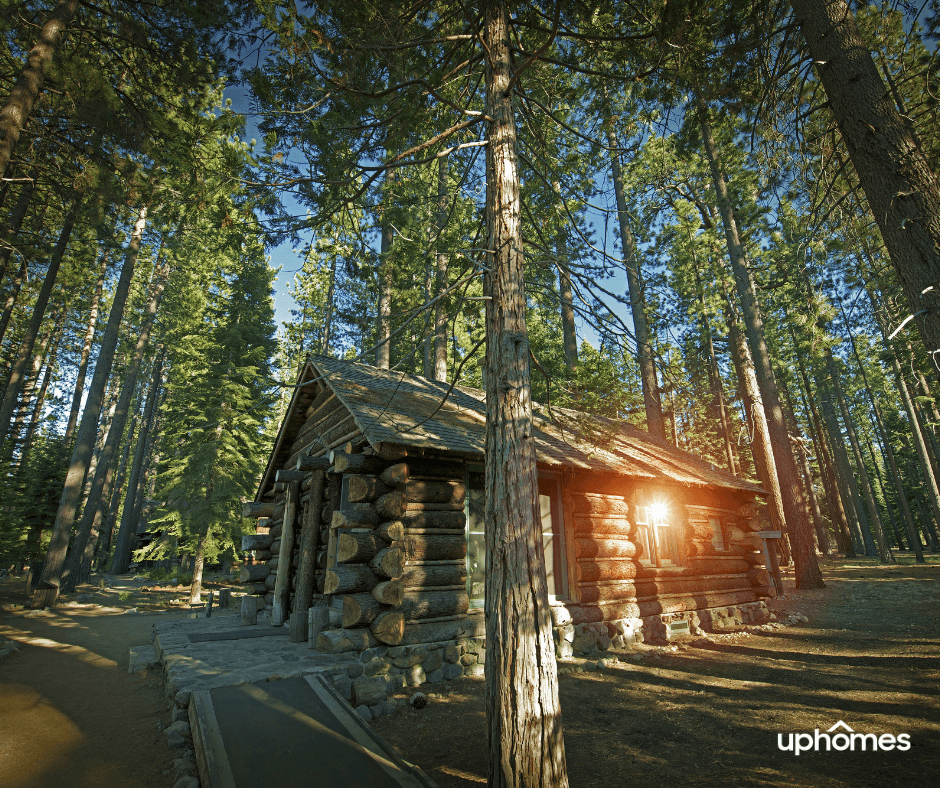
16. Cabin
Wanting to get away from it all? A cabin in the woods will check that box. Cabins are an ideal choice for people who don't want to be bothered— butdowant to be closer to nature.
Cabins can sit on wooded lots or overlook lakes. Some are quite rustic with simple kitchens and furniture. And usually, the square footage will be smaller than what you'd expect in a vacation home or single-family home.
Cabins tend to focus on wood and natural materials so they can blend in with their surroundings. Don't expect to see a cabin and be overwhelmed by an impressive exterior.Doexpect to love looking out the window once you're inside.
You may think of cabins as vacation spots, but they can be a good choice for year-round living. If you work remotely or don't mind a commute, cabins provide a sanctuary from the bustle of daily life. And if you're tired of dealing with annoying neighbors, you won't need to worry about that living in a cabin.
17. Apartment
Not sure you want to make a down payment on a home yet? When you're not ready to commit to buying— or you don't have the funds to do so— an apartment is a good answer.
With an apartment, you rent a unit. As a result, you don't have complete ownership of your living space.
You will sign a contract detailing the monthly rent payments. You'll also agree to the length of the rental period. Finally, you'll learn the restrictions on what you can do with your space.
You can find high-rise apartments in city centers.You can alsofind apartmentsin suburbs or small towns. Some are managed by professional companies with oversight of several apartment buildings.
There may be a penalty if you back out of a rental term early, so check the fine print when signing a contract. And if you choose a shorter-term lease, you may pay more per month. Apartment managers prefer to have their units occupied all the time.
The downside to an apartment is that you don't have a lot of control over how your unit looks. While you may be able to hang pictures or curtains, you won't be able to upgrade appliances or paint the walls. Additionally, you can't control how noisy or quiet your neighbors are.
The benefits of leasing an apartment include the fact that the owner is responsible for repairs. Apartment managers are bound by law tokeep your unit liveable. So you'll save on maintenance expenses!
18. Manufactured Home
When you're working with a tight budget, look into a manufactured home. Unlike a lot of homes, manufactured homes arenotbuilt on-site. The finished home is transported to its final location.
With so many different types of property, why get a manufactured home? For starters, they are a cheaper option than a traditional home. This is because they are built according to specific guidelines.
Builders work in a factory setting, so you won't see any production delays.The speed of producing manufactured homes is faster, too.
If you need to move into your dream home right away, you can do so faster in a manufactured home.You won't sacrifice safety, either. Builders are skilled and know how to anchor the homes to the land beneath them.
Manufactured homes are far from stodgy — and not all manufactured homes resemble trailers. Add a deck, get them with hardwood floors, and equip them with energy-efficient appliances. You can make your manufactured home as modern as any other type of home.
19. Mobile Home
Mobile homes are built off-site and brought to their final location, too. While this sounds similar to a manufactured home, thereis one key difference. A home built beforethe mid-1970s is considered a mobile home, while one built after that time is a manufactured home.
Because mobile homes are older, they aren't built according to thestrict codes that cover manufactured homes. You might not know what you're getting when it comes to plumbing, fire safety, and construction. As a result, mobile homes are even cheaper.
Some people own their mobile homes and the property around them. In other instances, people rent a mobile home from someone who owns a mobile home park.
Mobile homes are good if you want to avoid sharing walls without spending much money. You may be able to find mobile homes for under $50,000.
20. Mid-Century Modern Style
Mid-century modern homes spotlight clean lines, neutral colors, and geometry in their design. Not everyone loves rustic charm, sothesehomes provide a cleaner alternative. If you don't like your homes to be busy or stuffy, this might be the right home for you.
Mid-century modern homes emerged in the 1950s. Big windows, sharp angles, and a strong connection to the surrounding landscape are key features of these homes. Their style has become popular again due to the clean lines and minimalist style.
You'll also see that the materials do the talking in these homes. You could find anything from vinyl to plywood on the walls or floors. But don't expect to see a lot of flashy woodworking or intensedesign elements like you would in some other styles.
21. Cape Cod
Even if you don't live along the shore, you can stillfind a housewith some of that coastal charm. Cape Cod houses take their name from— you guessed it— Cape Cod. These houses are on the smaller side, but that's because they used to serve as homes for fishermen.
You'll know a Cape Cod by its strong chimney. Sometimes the chimney sits toward the center of the home, too. You'll also notice prominent shutters and white trim in many examples.
Cape Cods are compact homes, but modern versions are a lot bigger. Wealthier buyers looking for a beachfront home turn to the Cape Cod as their style of choice. As a result, you'll see bigger versions in places like Nantucket and the Hamptons.
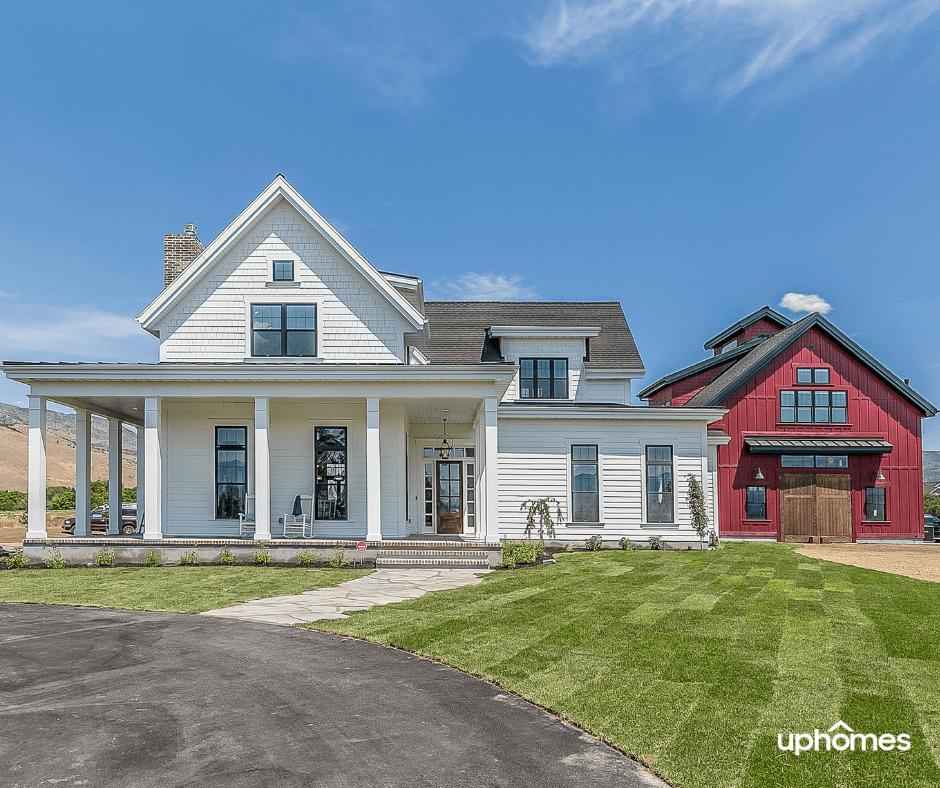
22. Farmhouse
Ifyou're going for a warm and rustic home, a farmhouse fits the bill. This classic style takes its cues from barns and farm dwellings from yesteryear. It's become a popular style in recent years for its casual elegance.
Farmhouses may greet you with a big front porch or stairway to the entrance. You'll notice a roof with a higher pitch and windows with shutters, too. These houses tend to look symmetrical and clean.
From a materials standpoint, you'll find anything from siding to brick— or some combination of both. And on the inside, you can expect to see exposed beams and hardwood floors. All of this combines to create a home that is inviting and timeless.
For a modern take on this style, many owners have refreshed their farmhouses with stark white walls and dark hardwoods. With some modern furniture in neutral tones scattered throughout the house, a rustic farmhousecan look modern.
23. Mansion
When you have the means to invest in a bigger and flashier property, a mansion may be what you're looking for. With a mansion, you get a large and impressive home— normally with a large and impressive property to match.
While there's no specific definition for what a mansion is, you'll know one if you see one. A gated entrance, imposing size, and elaborate landscaping are telltale signs that you're looking at a mansion.
The downside to a mansion is that the sheer scale of theproperty requires a lot of upkeep. You'll need to hire lawncare specialists to maintain the yard, garden, and trees. Inside the home, you'll need staff to manage cleaning such a large space.
23 Different Property Types: Real Estate Guide
It's smart tolook at all of your options when you're considering buying a home. With all of the different property types in real estate, there truly is something for everyone. You want a home that checks the right boxes and one you can be proud to call home. If you can go into the home shopping experience with this knowledge in-hand, you'll have an easier time making the right choice on what type of property is best for you!

Ryan Fitzgerald
Hi there! My name is Ryan Fitzgerald, and I am a REALTOR®. My goal is to help you learn more about real estate through our Real Estate Blog! Hopefully, you enjoyed the above blog post and it found a way to provide help or value to you. When you're ready to buy or sell a home of your own let us know here. Please feel free to join the conversation by dropping us a comment below.

